It's time to upgrade your training education! Whether you're new to the bench press or a seasoned veteran of the squat rack, you can always benefit from more iron knowledge. Make the most of your hard work, intense effort, and dedication to the gym with these 30 tips! You've probably seen a few before, but you're bound to learn—and lift—something new.
1
Focus On Compound Exercises
The biggest mistake you could make is choosing isolation movements over compound exercises. A compound exercise is a multi-joint movement that works multiple muscle groups at one time. Compound exercises like squats, deadlifts, rows, shoulder presses, and lunges should always make up the foundation of your workout program.
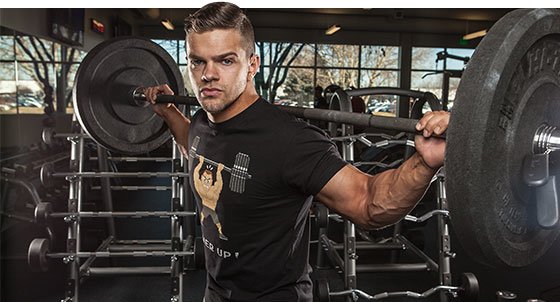
Engaging more muscle groups at once means that you'll be able to increase the load. Heavy lifting helps build lean muscle, strength, and your mind-muscle connection. Another benefit? Compound exercises engage your core, meaning you won't have to spend those last 10 minutes of your workout doing non-stop crunches.
2
Start With A Warm-Up Set
Aiming for a max load first thing in a workout is an injury risk waiting to happen. Perform a warm-up set on the first set of any big exercise, if not the first 2 or 3 sets. Warming up will stimulate blood flow, help you groove tough movements, and prime your body for heavier weight.
3
Never Sacrifice Good Form
No matter your training program or technique, keep one thing in mind: Form is the key. Never lift with your ego at the cost of proper technique. Sacrificing good form puts unnecessary stress on your joints and muscles, increasing the risk of injury. Poor form also increases the chance that you're not working your targeted muscles to their full potential, which may cost you gains.
4
Check Yourself
If you struggle to keep good form, consider exercising in front of a mirror or videotaping difficult exercises. This allows you to watch your body more closely and asses your movements. If you have a tough time on a particular exercise, the mirror can be a quick and useful guide. Sometimes you need the visual component to make sure you're properly positioned and aligned.
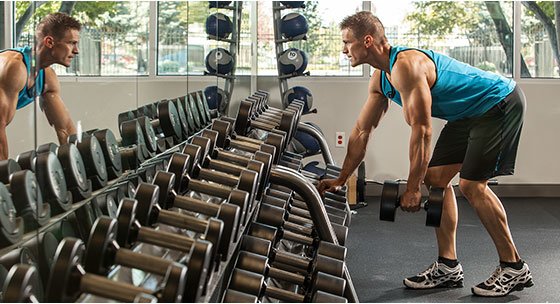
5
Slow Down
Don't cheat your reps by using momentum—rather than your muscles—to move a load. To help avoid swinging a weight, slow down each exercise. Go one step further by pausing and squeezing at the top of each lift. This will eliminate any momentum in the equation and ensure that you only use brute strength to lift those weights.

6
Adjust for Fat Loss
When you work to lose fat, you typically eat fewer calories. Because you ingest less potential energy, you probably have to adjust your workout. To prevent muscle loss during a cut, don't drop the amount of weight you'd normally lift. To compensate for the reduced fuel coming in, decrease your volume instead. Cut your reps and sets back by up to two-thirds, but keep an emphasis on heavy weight.
7
Use A Variety Of Rep Ranges
To achieve a balanced muscle- and strength-building program, include sets of both 5-8 and 8-12 reps. Varying your rep ranges and load will allow you to make optimal strength gains while stimulating increased growth. Focus on lower reps for compound movements and higher reps for isolation exercises.
8
Utilize Grip Changes
A simple adjustment can make a world of difference when it comes to breaking through a training plateau. Add in a new stimulus, like switching from a regular grip on bent-over rows to a reverse grip, to make a big difference over time.
If you want to mix things up, target your muscles with more drastic exercise variations. Switch your back squat to a front squat, for example, or focus on the close-grip bench press instead of using a typical wide grip.
9
Branch Out From Dumbbells
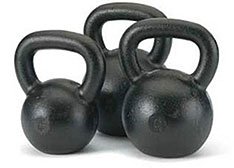
Just as grip changes help bust through plateaus, so does adjusting your training tools. Try switching from dumbbells to barbells and kettlebells. Or, incorporate cable pulleys into your workout. While the exercises may be similar the nature of the stress will be slightly different, which could be just what your muscles need to progress.
10
Strengthen Your Core
Maintaining a strong core is a must if you're going to lift heavy. Be sure to devote attention to core training—and I don't mean endless sit-ups. That "traditional" ab exercise takes the fast track to slow results. Why? It doesn't put proper stress on the target muscles. Instead, focus on compound movements that require balance and core activation. Single-leg deadlifts, single-leg squats, and split squats are all fantastic choices.
11
Mind Your Spine
The stability and position of your spine, neck, and pelvis can often reveal weak links in core lifts. A compromised spinal position also puts you at risk for injury. Brace your spine with your core to keep it protected, and lift safely by keeping your neck neutral. Strong, active glutes will also help keep your spine safe.
12
Use a Spotter
If you plan on going heavy to evoke the greatest strength gains, make sure you have a spotter. Knowing your spotter is there to assist you will free you to push your body to the max with each rep. Chances are you'll test your boundaries, challenge yourself, and even push through one or two more reps than you would without a spotter.
13
Deload Every 4-6 Weeks
A deload week can be beneficial and help manage total training stress over time. By dropping your total volume or lifting lighter, you'll give your body time to recover. A deload week saves you from having to take a complete week off training and lets you hit your next training phase fresh and full of energy. Deload once every 4-6 weeks of heavy training.
14
Don't Overdo Cardio
If you aim for optimal strength gains, keep cardio to a minimum. Worried about adding extra body fat? Turn to your diet instead of the treadmill. Adjust your calorie intake and focus on incorporating more lean protein into your diet to see strength gains without the addition of extra fat.

15
Squat Lower
Going only halfway down through your squat is the fastest way to short-circuit results. To avoid this, be sure to squat as low down to the ground as you can. At the bottom of your squat, your thighs should be at least parallel with the ground. This will evoke maximum glute and hamstring stimulation, ensuring better overall results. Only people with pre-existing knee problems or other injuries should modify the depth of their squat.
16
Watch Your Knees
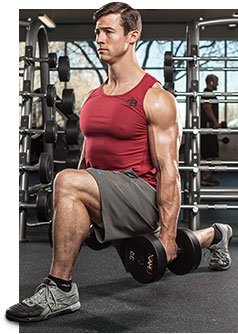
Make sure that your knees move in line with your toes during lunges, squats, and split squats; it's essential to keeping your joints pain free. Make sure you pay attention to their placement as you execute these movements; never allow them to move too far inward. You don't want your knees to cave during a big lift.
17
Sumo Squat
If you want to work your inner thighs, sumo squats should be your exercise of choice. The foot placement—a wider stance with your feet angled outward—will place more stress and tension on your inner thighs and glutes. Who knows, the different movement pattern required might also help you bust through a progress plateau!
18
Regularly Interchange Implements
If you always lift barbells on the bent-over row or bench press, you might want to consider swapping to dumbbells for a few sets. If one arm is stronger than the other, barbells allow the stronger arm to overcompensate for the weaker side; this causes increased imbalance in growth. Lifting with dumbbells will prevent this from occurring—or it will make the strength imbalance so obvious that you have to address it.
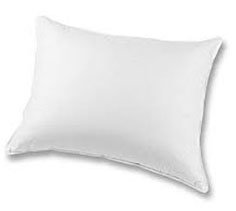
19
Respect Your Rest
If you aren't resting sufficiently, you won't build strength or size. Lifting tears down muscle tissue; rest and nutrition build it back up. This is a simple point, but it's crucial: Don't ignore the importance of rest inside and outside the gym. Take at least one day to recover each week. Inside the gym, aim to rest 1-3 minutes between low-rep sets of near maximal effort and 30-90 seconds between lighter, high-rep sets.
20
Know Your Body
Every human body is different and each can handle a different amount of volume. Always listen to your body and adjust accordingly. Don't keep pushing yourself if your body tells you no. Take a break from your program and rest. Remember that each person has a different recovery capacity. It's your job to listen to and respect yours.
21
Strength First
Before you start adding supersets, dropsets, or pyramid sets to your workout program, focus on building a strong foundation. Take advantage of the fact that, if you're new to training, you'll experience remarkable gains from basic programming and big lifts. You can start adding additional intensity techniques when you've spent more time under the bar.
22
Lift First, Cardio Later
If you plan both cardio and strength training on the same day, lift first. Lifting is more taxing on the central nervous system, so you must be at your strongest for it. Cardio also uses more muscle glycogen, or stored energy, which you don't want to deplete prematurely.
23
Track Your Workouts
Don't leave progress and possible gains up to memory. Write down everything you do during each workout session, including reps, set, weight lifted, and how you felt. This will allow you to make steady progress from session to session. If you leave what you did to memory, your recollection may become muddled. Keep a workout log either on paper or on your phone with a free app like the BodySpace workout tracker.

24
Hydrate
Make a dent in that water jug, especially before your workout begins. Hydration is essential for proper workout performance, so make sure that you go into each session fully hydrated. Even slight amounts of dehydration can sap strength and performance levels in a hurry, so drink up. Drink a few liters of water in the hours leading up to the workout and another liter of water during and after the session.
25
Tune Out Distractions
If you're mentally distracted during your workout session, your mental intensity will suffer. Since intensity is the cornerstone of progress, you can't let it slide. Tune out all distractions at the gym so you can attack the task at hand. Sometimes you just have to rely on your buds—your ear buds that is. Research suggests that listening to fast, upbeat tunes can increase respiration and elevate your heart rate, gearing you up to fully attack that workout.
26
Wear Proper Footwear
Sure, you know not to wear loafers to the gym, but the importance of lifting in proper shoes is often overlooked. Wearing the wrong kicks is a fast way to get an ankle injury or nagging blister. If you use the same shoes for strength training and cardio, make sure to replace them regularly. Remember that, even though they may look new, a shoe's structural support can get worn out. Replace running shoes every 350-550 miles. If you're interested in minimalist training shoes, check out this full round-up.
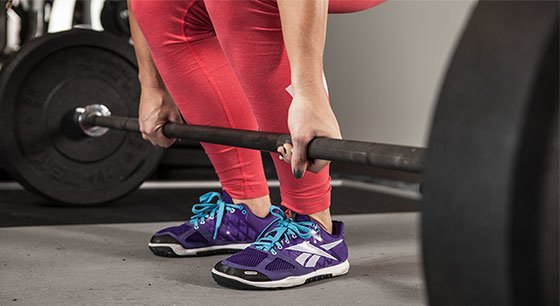
27
Frequency for Growth
If you're not building your desired amount of size, you might not be training frequently enough. To ensure optimal results, aim to hit each major muscle group in the body at least once every five days. Think about it like this: If you only train your chest once per week, it means you then take six days off from that particular muscle group. To keep muscle protein synthesis elevated and stimulate consistent growth, you could hit that muscle every few days.
28
Don't Fear Bulking Up
Guy or girl, I'm sure you've heard a friend say, "I just don't want to get too big." If you want to build muscle, regardless of your gender, then you have to overcome your fear of "bulking up." You won't turn into a hulk overnight, believe me. Substantial muscle growth takes years of hard work, intense effort, and stellar nutrition. If you're a female, it often takes even more work because of lower testosterone production. So banish your fear of "getting huge" and commit to progress.
29
The Post-Workout Fuel Factor
For optimal workout performance, future growth, and faster recovery, you can't consistently neglect solid post-workout nutrition. While there's a lot of debate over nutrient timing, the right nutrients shortly after a workout will kick-start repair, stimulate protein synthesis, restock your muscle glycogen, and help you recover between training sessions.

Consume at least 20 grams of protein after your workouts—preferably whey, or whey and casein—to stimulate growth. If you're focused on building size and strength, fast carbohydrates can help replenish muscular energy stores and support growth. Shoot for 50 grams or more if you're not on a low-carb diet or cut. Creatine and beta-alanine support muscular strength and endurance, and they also mix well in your post-workout cocktail. Beyond these staples, you can get even creative by adding branched chain amino acids, betaine, and more.
30
Become an Eccentric
People often mistakenly put all their attention on the lifting phase—the concentric—portion of an exercise. Concentric action contracts the muscle you target; eccentric movement lengthens that muscle. In a dumbbell biceps curl, lifting the weight up is the concentric action, and lowering it under control is the eccentric portion of the life.
If you blow off the eccentric portion of a movement and let gravity do your work, it's time for a change. By performing the eccentric movement in a slow, controlled manner, you'll tax your muscles, create more damage, and stimulate new results. You can see remarkable strength gains if you stress this movement pattern and maintain the tension in the muscle.
Tell Us Your Favorites
You probably use many of the tips above, plus a variety of your own favorite techniques. Help the community and share some of your favorite lifting tips in the comments below!
